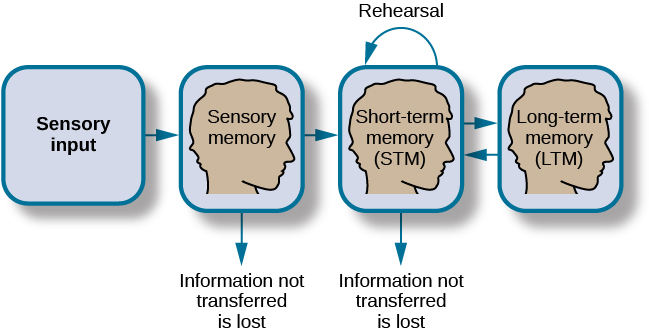Lesson 5.1: Memory Model and Techniques

This lesson incorporates a view of the memory cycle from initial input to long-term storage, along with memory principles and techniques.
For starters, take a pre test to asses what memory techniques you already use.
An Information Processing Model
Once information has been encoded, we have to retain it. Our brains take the encoded information and place it in storage. Storage is the creation of a permanent record of information.
In order for a memory to go into storage (i.e., long-term memory), it has to pass through three distinct stages: Sensory Memory, Short-Term Memory, and finally Long-Term Memory. These stages were first proposed by Richard Atkinson and Richard Shiffrin (1968). Their model of human memory is based on the belief that we process memories in the same way that a computer processes information.

UNIT 5, EXERCISE 1.2
“Nine Types of Mnemonics for Better Memory”
By Dennis Congos, University of Central Florida
- Read 9 Types of Mnemonics for Better Memory and transfer the information on a Cornell-styled note taking form.
EXTRA CREDIT: On a separate piece of paper (or on the downloaded version of the article), complete the worksheet that follows the article, “Have a mnemonics party.” DO ANY TEN of the items. (5 points).
Licenses and Attributions
“How memory functions” by OpenStax is licensed under CC BY 4.0

